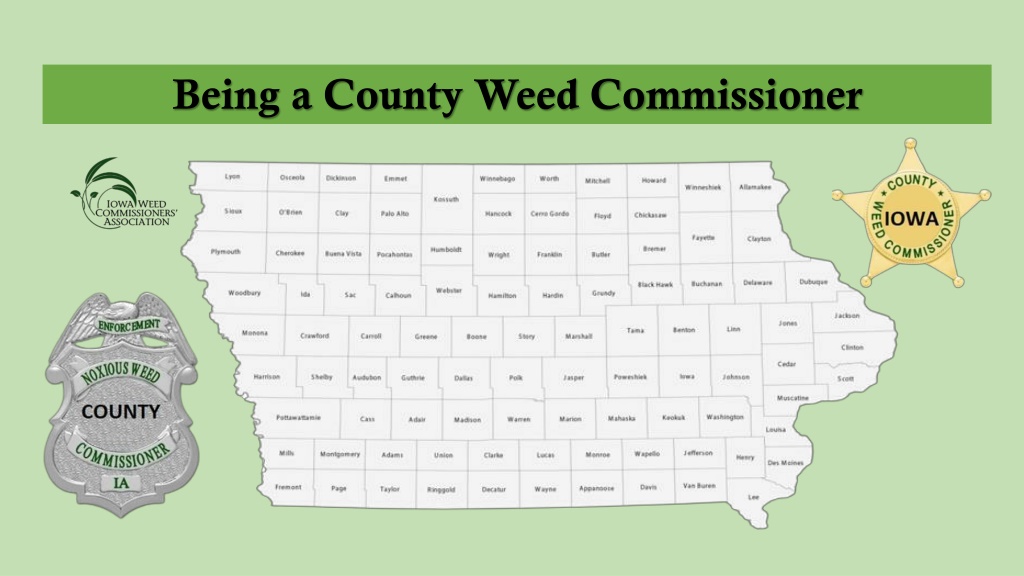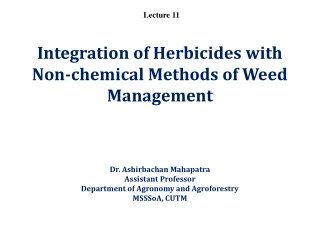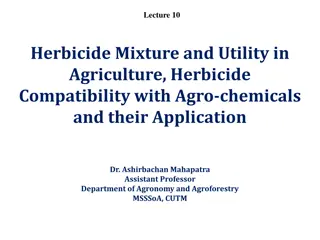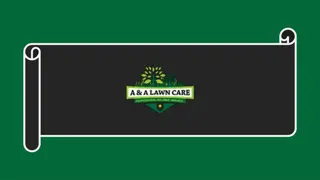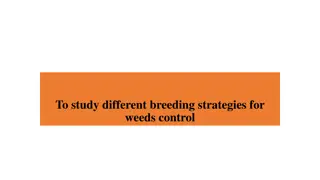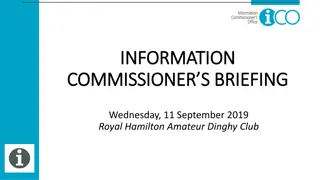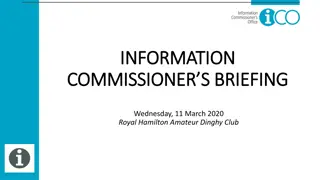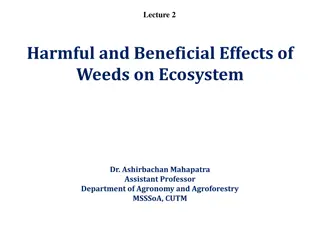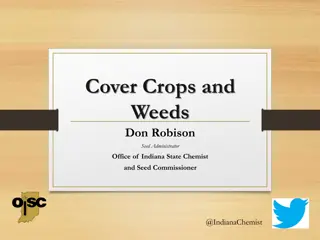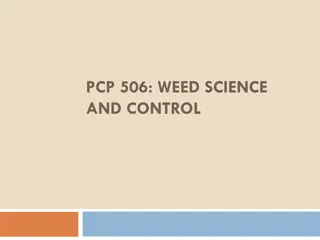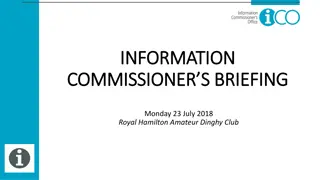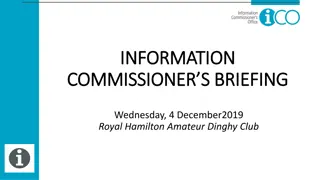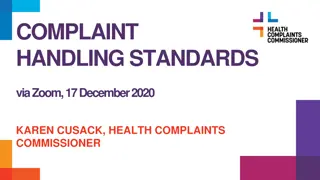County Weed Commissioner Standards and Responsibilities
County Weed Commissioners play a crucial role in noxious weed control by meeting specific standards set by the Department of Agriculture and Land Stewardship. They are responsible for identifying, controlling, and reporting on primary noxious weeds in their jurisdiction, as well as submitting annual reports to the board of supervisors and the state secretary of agriculture. The Commissioners are tasked with eradicating and controlling a variety of harmful weed species to protect agricultural lands and natural ecosystems effectively.
Download Presentation

Please find below an Image/Link to download the presentation.
The content on the website is provided AS IS for your information and personal use only. It may not be sold, licensed, or shared on other websites without obtaining consent from the author. Download presentation by click this link. If you encounter any issues during the download, it is possible that the publisher has removed the file from their server.
E N D
Presentation Transcript
County Weed Commissioner Standards 317.3 Weed commissioner standards for noxious weed control. The board of supervisors of each county may annually appoint a county weed commissioner who may be a person otherwise employed by the county and who passes minimum standards established by the department of agriculture and land stewardship for noxious weed identification and the recognized methods for noxious weed control and elimination. The county weed commissioner s appointment shall be effective as of March 1 and shall continue for a term at the discretion of the board of supervisors unless the commissioner is removed from office as provided for by law. The name and address of the person appointed as county weed commissioner shall be certified to the county auditor and to the secretary of agriculture within ten days of the appointment.
Weed Commissioners Annual Report 317.7 Report to board. Each weed commissioner shall for the territory under the commissioner s jurisdiction on or before the first day of November of each year make a written report to the board of supervisors. Said report shall state: 1. The name and location of all primary noxious weeds, and any new weed which appears to be a serious pest. 2. A detailed statement of the treatment used, and future plans, for eradication of weeds on each infested tract on which the commissioner has attempted to exterminate weeds, together with the costs and results obtained. 3. A summary of the weed situation within the jurisdiction, together with suggestions and recommendations which may be proper and useful, a copy of which shall be forwarded to the state secretary of agriculture. The Weed Commissioners certification form must also be sent in to IDALS yearly with the Annual report.
CHAPTER 317 (Original list) Buckthorn Bull Thistle Canada Thistle Field Bindweed Hoary Cress Horsenettle Leafy Spurge Musk Thistle Perennial Sowthistle Quackgrass Russian Knapweed Tall Thistle Multiflora Rose Purple Loosestrife Wild Sunflower Curly Dock Poison Hemlock Puncturevine Sheep Sorrel Smooth Dock Teasel Velvetleaf Wild Carrot Wild Mustard Shattercane Marijuana Buckhorn Plantain Cocklebur
Chapter 58 Noxious Weeds As of 3/6/2019 Priority Noxious Weed list to Enforce by Commissioners 21 58.4(317) Noxious weed lists. 58.4(1) Class A noxious weeds for eradication. The following weed is included: a. Palmer amaranth (Amaranthus palmeri). b. Reserved. 58.4(2) Class B noxious weeds for control. The following weeds are included: a. Canada thistle(Cirsium arvense). b. Teasel(Dipsacus spp.) biennial. c. Leafy spurge (Euphorbia esula). d. Bull thistle (Cirsium vulgare). e. Multiflora rose (Rosa multiflora). f. European morning glory or field bindweed (Convolvulus arvensis). g. All other species of thistles belonging in the genus of Carduus.
Quick Overview of Chapter 317 From a Weed Commissioners Point of View File Notice To Destroy in Official County Newspapers Set Official Date to Destroy Noxious Weeds Receive a complaint/ spot an infestation Inspect property & serve a legal Notice to Destroy on landowner Gives landowner 5 days to comply Re-inspect Property for compliance After 5 days the WC can start fining $10/day for 10 days. Or Can destroy the weeds with OR without permission Total Assessment taken to County Board of Supervisors (who automatically add 25%!) Special Tax Hearing held for landowners who want to protest Assessed amount then transferred to County Assessors Dept. to be added to the property(s) tax assessment
Example of a Typical Weed Scenario 20 AC Parcel infested with Bull Thistle, Teasel, and Canada Thistle Inspection + Service of Notice $40 +$40+any notice costs ($30)= $110.00 Re-inspection for Compliance $40 + $40= $80.00 Weed Destruction (mowing) $320 (8 hrs.) + $400 (8hrs.)= $720.00 BOS Special Assessment (25%)$910.00 + $227.50= $1137.50
Conclusion Conclusion Always contact your Board of Supervisors and legal department on how they would like you to enforce Noxious weeds within your county. Contact surrounding county Weed Commissioners with questions or advice on how they deal with problems within their county. For County contacts click the link below. https://iowaweedcommissioners.org/county-contacts
